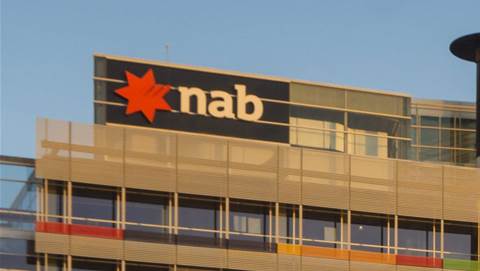The Australian Red Cross is in the final stages of adopting a data mesh approach using Microsoft Fabric following a “false start” with a traditional centralised data lake model.

The not-for-profit organisation began rolling out Microsoft Purview as its enterprise data platform during its multi-year transformation in 2023.
However, it shifted course following the release of Microsoft Fabric later that year, aligning its strategy more closely with a data mesh approach.
Speaking on the iTnews Podcast, former CIO Brett Wilson said initial ingestions into the data lake—such as finance datasets—had delivered “some great insight”, but ultimately the organisation decided to adopt a data mesh approach.
“What we're hoping to get out of [Fabric] is... how do we combine different data sets from different sources and look at data in a different way that we may not have previously looked at,” Brett told the podcast during the iTnews Benchmark Awards held in March, ahead of his later departure the following month.
“If we looked at a data set from [an] external, maybe from the government, [source] and one of our internal data sets, and we join them together, could that give us more predictability or could that give us something that we don't normally have?”
In early 2024, the not-for-profit also formalised a data governance function to address challenges with data quality, retention policies, and ownership.
“We recognised that across the organisation there was a lot of data and we were bringing this data into one location,” Wilson said.
“What we were seeing, though, is the quality of the data and understanding around retention periods of the data and privacy... weren't really well thought [out].
“We stood up a data governance function. And it was really about bringing the functions of the business into one area and making sure that they understood that they are accountable for the quality of data.”
A shadowy culture
The Australian Red Cross first kicked off its digital transformation program in November 2022, which saw it consolidate its infrastructure into six core systems and introduce what it termed a new “digital spine”.
Speaking on the podcast, Wilson said the move to transform the 110-year-old organisation stemmed from a significant proliferation of shadow IT, which left a “ huge amount of technology” in the business “unmanaged”.
Indeed, shadow IT made up as much as 89 percent of the organisation’s technology footprint when Wilson joined the Australian Red Cross in February 2021.
“[There were] a lot of security challenges as well that obviously we've overcome, but also [there was] probably a culture of an organisation where we didn't really look at data and some of the other elements around emerging technologies to see how we could move forward,” he said.
One of the key changes initiated by the program was the adoption of Microsoft Dynamics as its end-to-end platform for finance, CRM and marketing automation.
This was complemented by using Optimizely to build a customer data platform, which, according to Wilson, helps “stitch data together” from different front-facing sources, such as social media and website traffic.
" It was about de-risking or providing more visibility...across the organisation and bringing that up into a single platform away from spreadsheets,” Wilson added.
Making a difference
Although Wilson has since left the Australian Red Cross, he was able to touch on some of the key technology priorities in place this year.
Among them, in his words, are focusing on “what really makes a difference in the organisation” amid a small decline in funding.
“The focus is really around how do we improve that funding pipeline,” he said. “How do we make CRM more engaging -- for external, donors [and] also internally? How do we make sure we can segment specific areas to communicate and market to them a lot more effectively?
"Hyper-personalisation is one of those key pieces at the moment where instead of just being an email blast, it's personalised to the person who it's going to with content that's related to them as well.”







.png&h=140&w=231&c=1&s=0)



.png&w=100&c=1&s=0)

 Digital Leadership Day Federal
Digital Leadership Day Federal
 Government Cyber Security Showcase Federal
Government Cyber Security Showcase Federal
 Government Innovation Showcase Federal
Government Innovation Showcase Federal
 Digital NSW 2025 Showcase
Digital NSW 2025 Showcase












_(1).jpg&h=140&w=231&c=1&s=0)



